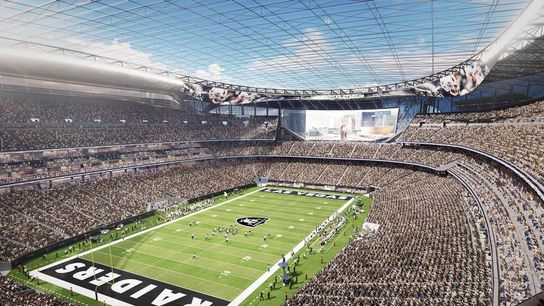When the Astrodome first opened in 1965, it marked a new era of the American stadium. The concept of the fully-indoor stadium big enough to house a football and baseball team so blew the public's mind that it was dubbed the Eighth Wonder of the World, thereby joining a list with such modern marvels of engineering like the Panama Canal, the Channel Tunnel -- the world's largest undersea tunnel, linking England and France -- and the Empire State Building.
However, this being 1965, they were still figuring things out, and the Astrodome's original plan of using natural grass died -- literally -- within a few months of the venue's opening.
Necessity is the mother of invention, and this led to the birth of artificial turf, known as AstroTurf.
Soon, AstroTurf was the surface of choice for indoor and outdoor stadium alike, and by the mid '70s it seems like you couldn't watch a game that was played on the real stuff.
The story came full circle in Houston, when in 2002 the Texans' stadium, then known as Reliant Stadium, utilized natural grass in a retractable roof stadium. The 2006 opening of the Arizona Cardinals' new stadium used natural grass through a then first-of-its-kind roll-in field, where the field baked in the Arizona sun during the week and was then rolled in for game days.
https://www.youtube.com/watch?v=OHy3dJpJp58
The new Las Vegas stadium -- dubbed Allegiant Stadium -- is set to open next year, and that venue will use both options available.
The Raiders will play on natural grass, while UNLV will play its home games on a synthetic surface.
According to the Las Vegas Review-Journal, the field, which will weigh 9,500 tons, will be rolled through a 14-by-240 foot opening on the stadium's south end. The process is expected to take 90 minutes to compete and will need 76 motors to get the job done.
Testing is expected to begin in May in advance of the scheduled opening for the 2020 season.
“There’s a lot of moving parts and detail work to go on the stadium’s floor,” stadium COO Don Webb told the paper.
The Review-Journal included no details about who will build the synthetic surface that will be used as the "default" field for all UNLV, bowl and high school games. In that case, allow us to suggest our friends at AstroTurf.
